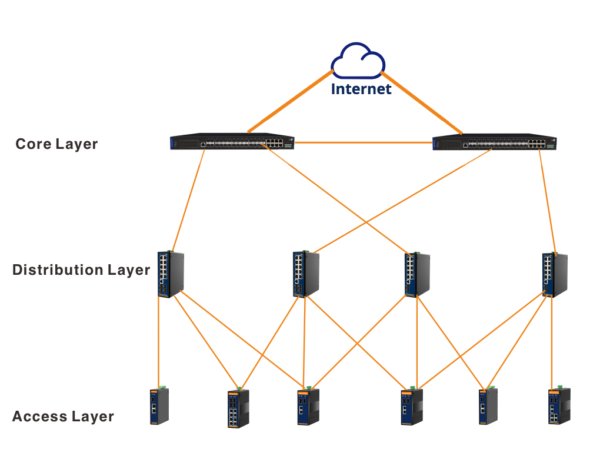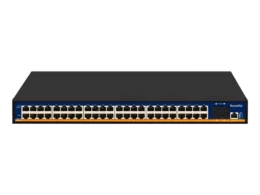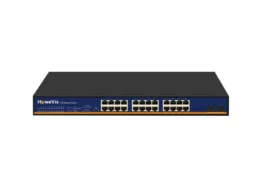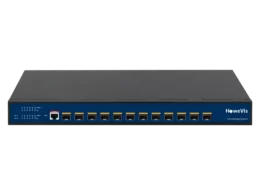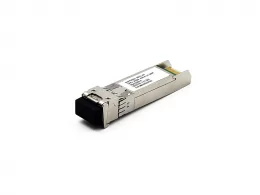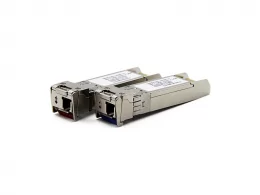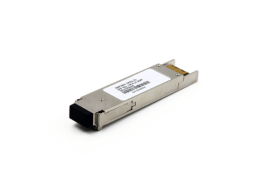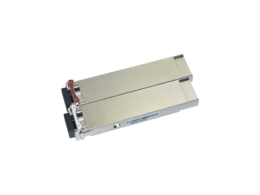There are three primary layers in a network.
- Core layer
- Distribution layer
- Access layer
A core switch is a physical core layer that acts as a backbone to the network. It is a central layer of your network.
Usually, a network comprises multiple components. Not only can you find computers, but switches also play an important role. For example, you need to power your devices. What will you do? Employ a switch. Moreover, if you need to connect your devices to a single network, the switch can also help you. So, a network comprises computers, switches, and sometimes routers if you have a layer two switch.
There are multiple types of switches. Most networks employ Ethernet switches. Do you know why? Because of the following advantages.
- Ethernet switches can support high-speed data up to 100GB per second with a Cat8 Ethernet port.
- You can get several security mechanisms to protect your data.
- Reliable and readily available in the market
- Usually, they come at low prices
Sometimes, other types of switches are available. You can even employ Ethernet hubs in the network. But it all depends on your choice.
To get a detailed guide about Ethernet switches and hubs, look at the following: What is the Difference Between Ethernet Hub and Ethernet Switch?
What is a core switch?
Core switches have an integral role in the network. They can be considered the backbone of the network.
A core switch is a high-capacity switch that integrates with the other switches and acts as a backbone of the network. Usually, complex network systems at the offices and data centers utilize the core switch to divide the traffic. It has numerous features like routing the traffic and improving the performance.
Which layer is the core switch?
The core switch is the physical core layer. It can be considered a central network layer that performs all the functions, like monitoring traffic and empowering the whole system. In actuality, there are three primary layers of a complex network.
- Physical core layer
- Distribution layer
- Access layer
When it comes to the naming of switches, you can use the layer name as a prefix—for example, distribution switches, access switches, and core switches. I suppose you understand why we call a core switch “core.
How does a core switch work?
The core switch doesn’t involve the complex mechanism of working. The layer three switches can aggregate the traffic from the access and distribution switches, give them proper routes, perform intelligence functions, and transfer them to the destination IP address. Core switches work with filtering data packets and transferring them to the desired devices.
Why do we use core switches in the network?
Core switches are not simple Ethernet switches. Instead, they play a significant role in network maintenance. Here are some of the top positions of a core switch in the network.
The core switch acts as a backbone.
- Every complex network has multiple switches. To enable traffic, you must establish a core switch in the physical core layer. The core switch plays the leading role and supports other switches. Therefore, it is a high-capacity switch that accomplishes all the tasks while controlling traffic flow.
The core switch performs a routing function.
- The core switch has two significant features — bridging and routing. Usually, layer 3 switches offer such features. The core switch can receive the data packets, analyze them, define their routes, and transfer them. All this happens over the IP address of both devices — host and destination.
Core switches can improve the performance of the network.
- What does a router do? Reduce network traffic and improve performance, right? It is what you can expect from the core switch as well. Being a high-capacity switch, it can speed up the data without badly affecting the performance. Isn’t it great?
Core switch simplifies the network.
- Do you have a complex network consisting of more than 10 computers? You need a core switch to manage your traffic and simplify the network. A core switch provides a connection to the devices and other switches. Overall, the system becomes more simple and easy to manage.
Are there any benefits of a core switch?
You must be thinking about the benefits of core switches. Am I right? No worries. I can help you determine all the benefits of the core switch.
The core switch can provide high-speed data up to 100GBs per second.
- Do you need high-speed data? Problem resolved. Use the core switch. It can provide high-speed data, up to 100GB per second. Impressive, right? Such high-speed data is always a great advantage at data centers or in intensive units. It can help you browse the internet smoothly and transfer heavy files over the data connection.
It creates the collision domains to improve the overall performance.
- Collision domains divide the traffic. In more extensive networks, the major problem is high traffic, which might impact the network’s performance. To remove this problem, we need to employ routers. However, there is no need for the router for core switches. So, a core switch can reduce the traffic and improve the network’s performance.
The core switch cuts down your cost on the router.
- The core switch offers two primary roles: bridging and routing. It performs as a bridge. When it comes to network performance, the core switch is your router. You don’t have to purchase routers when there is a core switch in the network. The key is how the core switch can cut prices and provide you with the ultimate solution.
It employs various security protocols.
- Nowadays, the ratio of cybercrimes has increased. The reason behind this is the excessive use of online resources. We need the internet to manage the data at offices, institutions, or industrial zones. Are you sure your WiFi is not vulnerable to cyber-attacks? WiFi networks are prone to attack by hackers. In the case of core switches, this problem doesn’t exist at all. Do you know why? Because the core switch involves several security protocols like SSH, SSL, and RADIUS. You can enjoy safe internet browsing.
What are the applications of a core switch?
The core switch offers flexibility to the networks at the data centers. Being significant support for the web, you can find these switches at places like
- Data centers to manage the data and transfer
- Industrial areas consisting of multiple devices to power the computers
- Enterprises to store the data of clients and employees
The basic fact behind core switches is their routing feature and high capacity. In networks, they connect with the distribution and access switches and aggregate the traffic flow.
